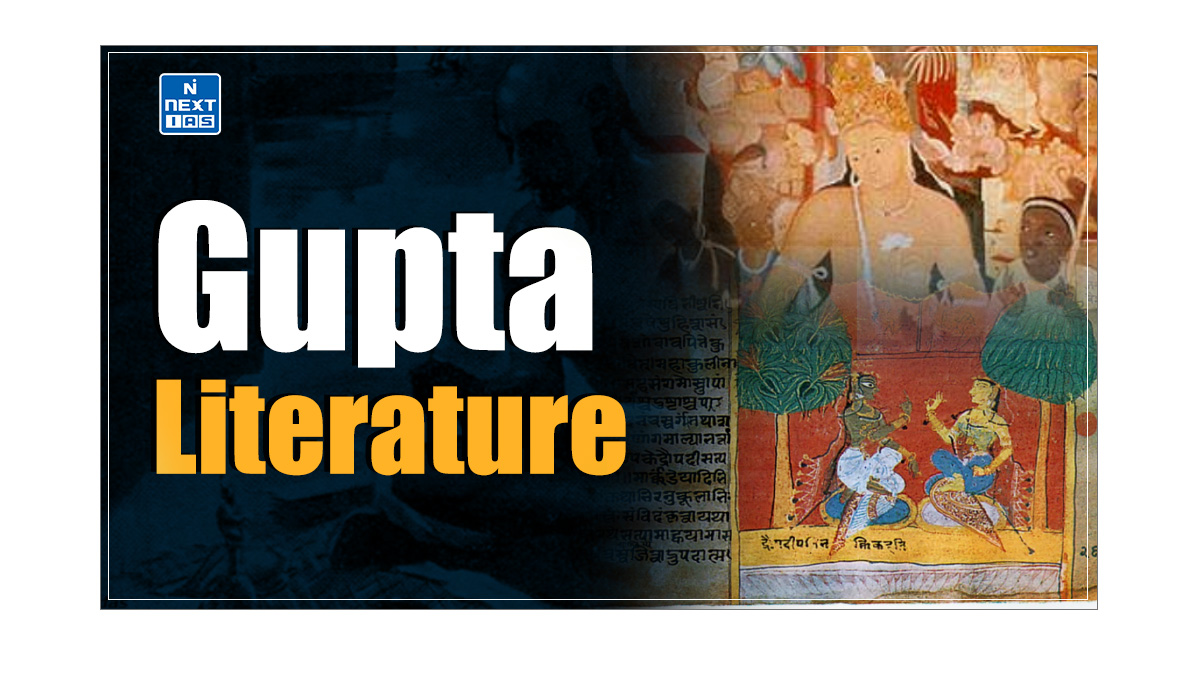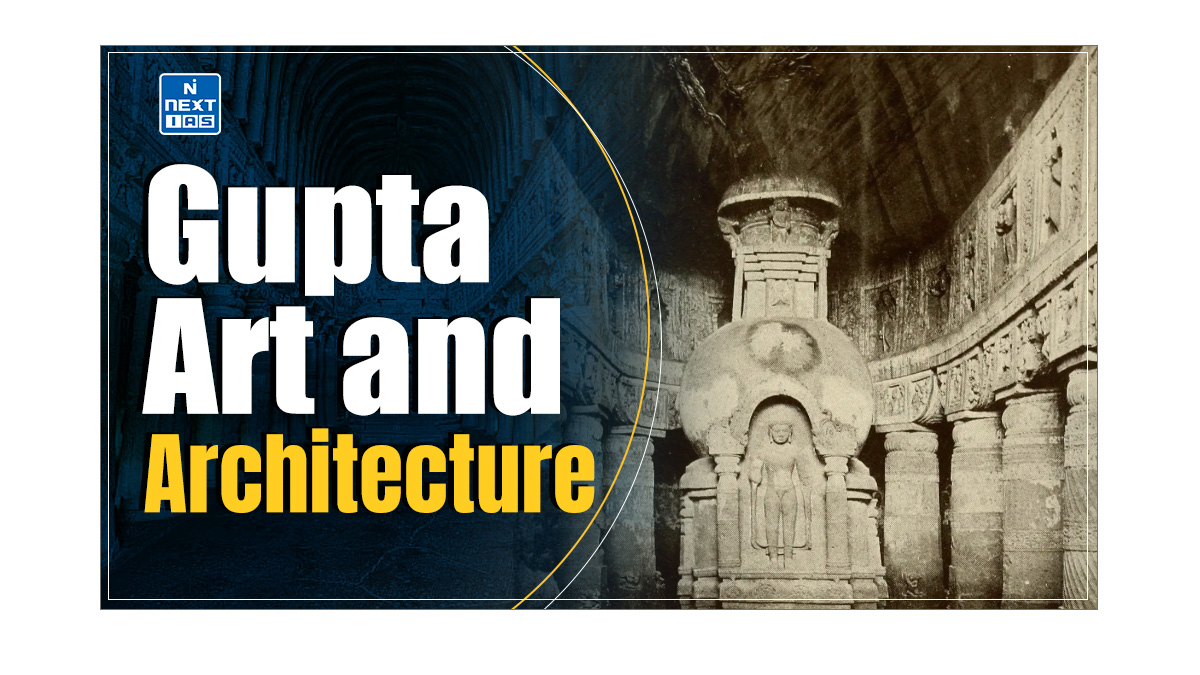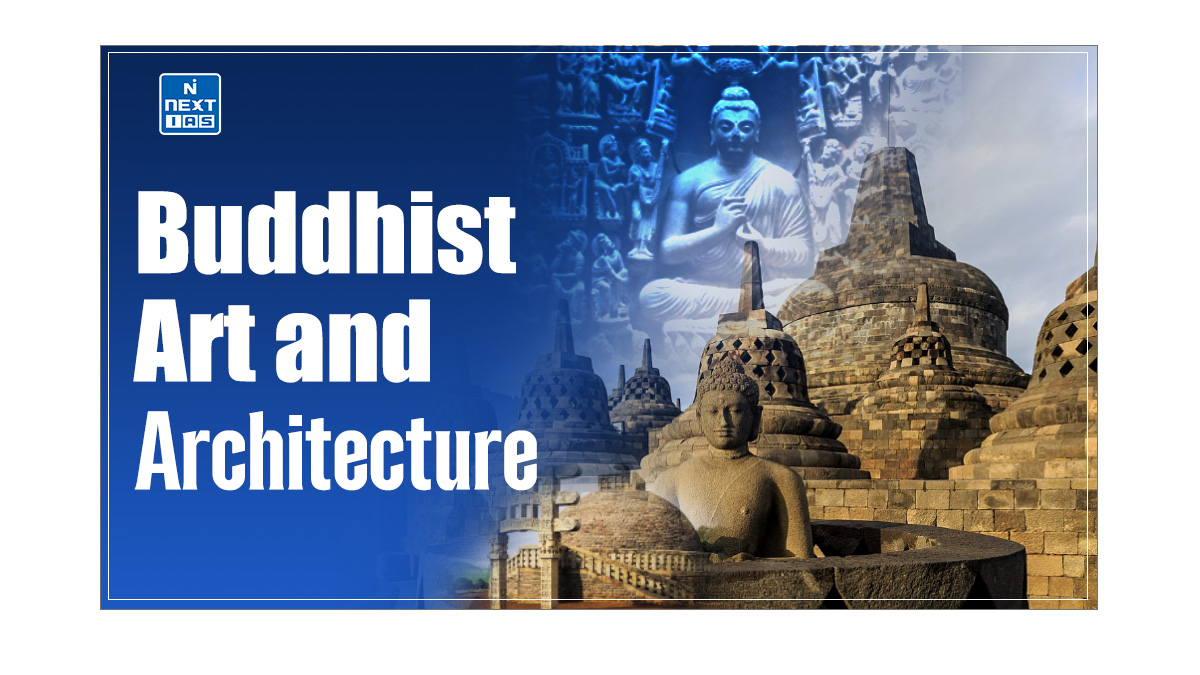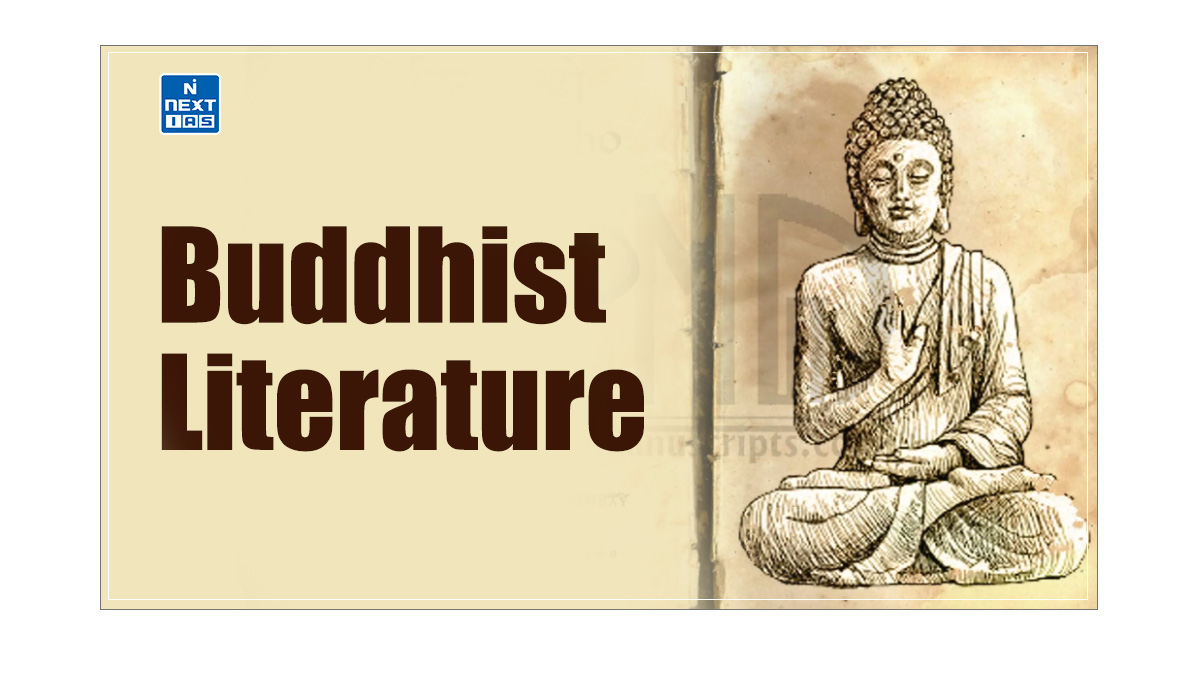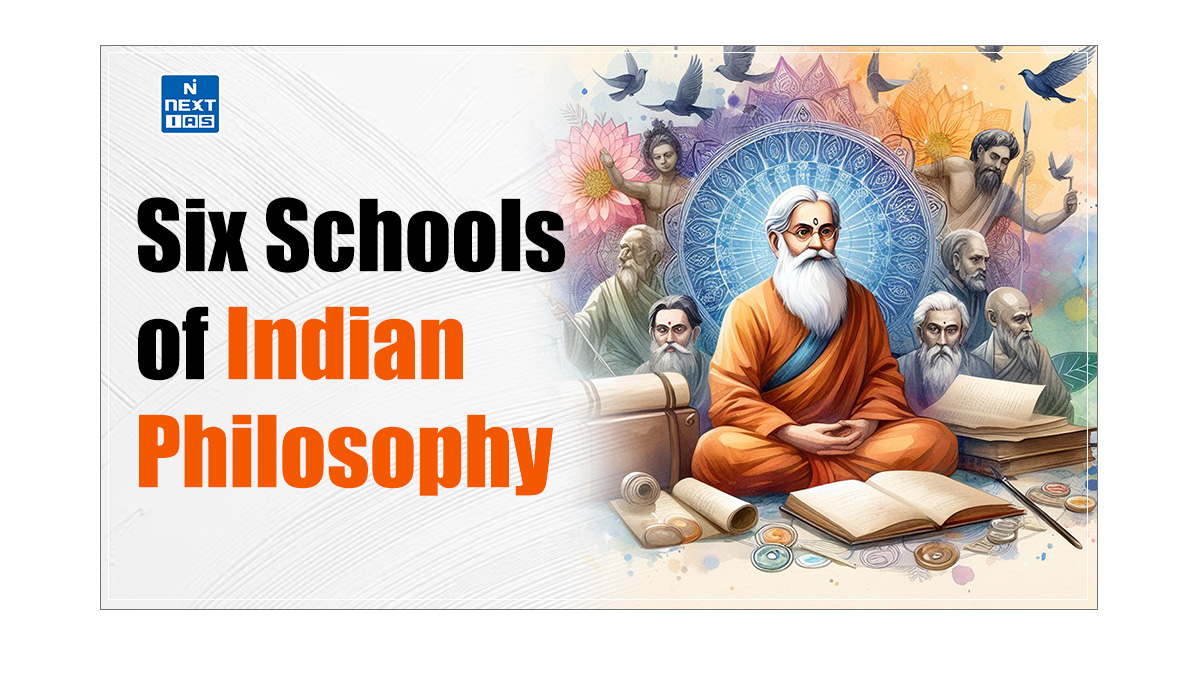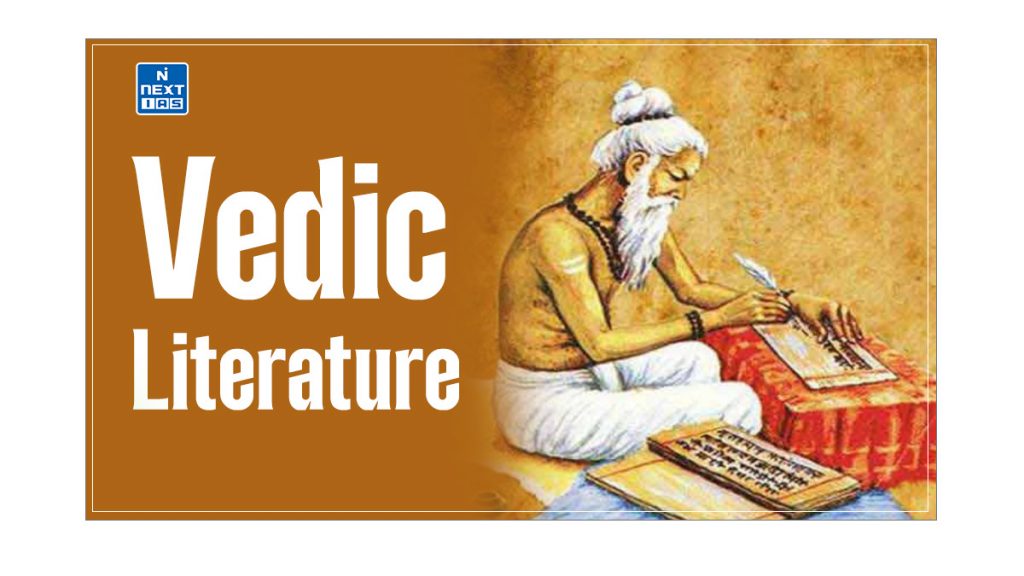
Vedic literature encompasses the sacred texts derived from the Vedas. These texts are pivotal as they provide insight into ancient Indian religious practices, philosophies, and societal norms. This article aims to study in detail the structure and content of Vedic literature to understand the spiritual and cultural context of ancient India.
About Vedic Literature
- The term ‘Vedic Literature‘ simply means literature based on or derived from the Vedas. The texts which constitute the Vedic literature are:
- The Four Vedas, i.e. Samhitas.
- Brahmanas are attached to each of the Samhitas.
- The Aranyakas.
- The Upanishads.
- The Hindus considered the Vedas to be revealed books and gave them the titles Apaurusheya (not made by men) and Nitya (Eternal).
- It is contended that Rishis wrote them under the inspiration of god.
- However, the Vedic hymns were composed by ancient Rishis for their sheer antiquity. They handed them over from generation to generation.
- The Vedas were considered so sacred that they were learnt by heart.
- Thus, they came to be known as ‘Shruti’.
- ‘Shruti’ is “that which has been heard” and is canonical, consisting of revelation and unquestionable truth and is considered eternal. Meanwhile,
- ‘Smriti’ literally means “that which is remembered, supplementary and may change over time”.
- It is authoritative only to the extent that it conforms to the bedrock of Shruti, and it is the entire body of the post-Vedic Classical Sanskrit literature.
- The Vedic literature is divided into three periods:
- The first refers to the time of Samhita.
- The second to the time of Brahmanas.
- The third to the time of the Upanishads.

Types of Vedic Literature
Vedic literature is the ancient body of texts in the Indian subcontinent, composed in Sanskrit. It is divided into four broad categories, each serving a different purpose in the religious and cultural life of Vedic society:
- Samhitas: The Samhitas are the oldest part of Vedic literature and consist of hymns, prayers, and mantras dedicated to various deities.
- Examples: The four Vedas—Rigveda, Samaveda, Yajurveda, and Atharvaveda—are the primary Samhitas.
- Brahmanas: The Brahmanas are prose texts that explain the rituals and ceremonies described in the Samhitas.
- They detail the proper performance of Vedic rituals and their symbolic meanings.
- Examples: Aitareya Brahmana (associated with the Rigveda) and Shatapatha Brahmana (associated with the Yajurveda).
- Aranyakas: The Aranyakas, known as “Forest Treatises,” bridge the ritualistic Brahmanas and the philosophical Upanishads.
- They explore rituals’ symbolic and mystical aspects, often intended for those who have retired to the forest for spiritual contemplation.
- Examples: Aitareya Aranyaka (associated with the Rigveda) and Brihadaranyaka (associated with the Yajurveda).
- Upanishads: The Upanishads are philosophical and mystical texts that explore the nature of reality, the self (Atman), and the ultimate truth (Brahman).
- They mark the Vedic tradition’s transition from ritualistic religion to spiritual and metaphysical thought.
- Examples: Chandogya Upanishad (associated with the Samaveda) and Mundaka Upanishad (associated with the Atharvaveda).
The following types have been discussed in detail in the following section.
Vedas
- The Rig Veda, Samveda, and Yajur Veda are collectively known as Vedatrayi.
- The Atharva Veda is considered a later addition. Bharatamuni’s Natyasastra is regarded as the panchama Veda (fifth Veda).
- The Rig Veda is the oldest among all Vedas and was likely compiled over several centuries.
- Some of the earliest hymns were composed around 1500 BC and passed orally from the teacher to the disciples.
Rig Veda
- The Rig Veda consists of 1028 hymns (sukta) divided into ten manuals or chapters, organised according to the name of the Rishi or the subject matter.
- Manuals 2 to 9 contain the oldest hymns, while the first and tenth Mandal seem to be later additions.
- The Rig Veda provides insight into the political, social, economic, and religious life of the people of Rigvedic India.
Sama Veda
- The Sama Veda, also known as the ‘Book of Chants’, consists of 1549 hymns meant to be sung during the Soma sacrifice by a particular class of Brahmanas called ‘‘Udgatris’’.
- Except for the 75th hymn, this Veda is derivative mainly, with most hymns taken from the Rig Veda. The Sama Veda reflects the Aryans’ appreciation for music and suggests they were not merely Puritans.
Yajur Veda
- It is also known as the ‘Book of Sacrificial Prayer’ because it prescribes the performance of sacrificial prayers.
- There are two primary texts on Yajur Veda:
- Black and
- White Yajur Veda.
- The White Yajur Veda only contains hymns, but the Black Yajur Veda contains commentary in prose and text.
Atharva Veda
- Initially, the Atharva Veda was not considered a Veda, but it is now recognised as such.
- Historically and scientifically, it resembles the Rig Veda and includes magic spells and early traditions of healing and magic, paralleled in other Indo-European literature.
- The Atharva Veda is divided into 20 books and 75 hymns, some praising deities.
The Brahmanas
- The Brahmanas are prose texts that explain the hymns of the Vedas, detailing sacrifices and rituals with their mystic meanings. Each Veda has several Brahmanas:
- The Rig Veda is associated with the Aitareya Brahmana and Kausitaki Brahmana, composed by Hotri-priests who recite the Rig Veda mantras during sacrifices.
- The Sukla Yajur Veda is appended with the Sathapatha Brahmana, the most exhaustive and significant Brahmana, recommending ‘one hundred sacred paths’ (Sathapatha).
- The Gopatha Brahmana is attached to the Atharvaveda. These Brahmanas serve as elaborate commentaries on the various hymns of the Samhitas.
The Aranyakas
- The word Aranyakas means ‘the forest,’ and these are called ‘forest books’.
- They were written mainly for the hermits and students living in the jungles.
- These are the concluding portions of the Brahmanas or their appendices. A strict code of secrecy was maintained over the Aranyakas, as it was believed that the contents would spell danger if taught to the uninitiated.
- Hence, they were to be studied in the forest. They deal with mysticism and symbolism.
- They form the natural transition of the Upanishads.
- They offer the bridge between the Karma marga (way of deeds) that was the sole concern of the Brahmanas and the Jnana marga (way of knowledge) that the Upanishads advocated.
The Upanishads
- The word Upanishad is derived from the root Upani-sad, which means ‘to sit down near someone’.
- It denotes a student sitting under the feet of his guru to learn. Eventually, the word began to describe the secret knowledge imparted by the guru to his selected pupils.
- Today, the word is associated with philosophical knowledge and spiritual learning.
- Upanishads are also called Vedanta (the end of the Veda), first because they denote the last phase of the Vedic period and second because they reveal the final aim of the Vedas.
- Our nation’s motto, Satyameva Jayate, is taken from the Mundakopanishad.

Vedangas
- Learning the Vedangas or the limbs of the Veda was necessary to understand the Vedic texts.
- These supplements of the Vedas comprised:
- Phonetics – Shiksha
- Ritual – Kalpa
- Grammar – Vyakarana
- Etymology – Nirukta
- Metrics – Chhanda
- Astronomy – Jyotish
Sutras
- The term Sutra means thread. The first sutra in literature is the Srauta Sutra. It deals with Vedic sacrifices.
- The Sulva Sutra prescribes various measurements for constructing sacrificial altars, while the Dharma Sutra deals with social duties.
- The Sutras have been divided into four parts:
- Srauta Sutra,
- Kalpa Sutra,
- Griha Sutra and
- Sulva Sutra.
Dharmashastras
- The Dharamshastras are treatises on dharma, civil and religious law. They are the primary source of knowledge regarding Brahmanical institutions.
- These shastras reveal the workings of the caste system in a rigid form.
- They highlight Hindu law, marriage, divorce, loans and partnerships, various crimes and punishments and judicial procedure.
- The Dharamshastras mention the four Ashrams for the twice-born Brahmacharya, Garihasthya, Vanaprastha and Sanyasa.
Arthashastra
- Arthashastra dealt with matters related to the economy. Kautilya wrote it.
Kamasutra
- The Kamasutra book dealt with physical pleasures.
Puranas
- The Puranas are in Sanskrit and mean ancient stories. There are 18 Puranas.
- They give valuable information about the political history of ancient India.
- The most important Puranas are Vishnu Purana, Vayu Purana, Matsya Purana, Brahma Purana, and Bhavishya Purana.
- However, the Puranas are not completely trustworthy as they are sometimes exaggerated.
Importance of Vedic Literature
The importance of Vedic literature lies in its profound impact on Indian culture, religion, and philosophy. Its significance is as follows:
- Foundation of Hinduism: Vedic literature forms the core of Hindu religious texts, outlining rituals, hymns, and philosophies that have shaped Hindu beliefs, practices, and traditions for thousands of years.
- Philosophical Insights: The Upanishads, part of the Vedic literature, provide deep philosophical teachings on the nature of existence, the self, and the universe, influencing not only Hindu thought but also other Indian philosophical traditions like Buddhism and Jainism.
- Cultural and Social Influence: The Vedas have significantly influenced Indian culture, including its social structure, arts, music, and language. Sanskrit, the language of the Vedas, is the root of many Indian languages.
- Historical and Linguistic Value: Vedic literature is one of the oldest records of human thought, offering valuable insights into the early history, society, and linguistic development of ancient India. It serves as a crucial source for understanding the early Indo-European language family.
Conclusion
Vedic literature offers a profound insight into ancient Indian spirituality and society through its texts, including the Samhitas, Brahmanas, Aranyakas, and Upanishads. It highlights the transition from ritualistic practices to philosophical exploration, reflecting the evolution of Hindu thought and societal norms. Understanding these texts and Vedangas, Sutras, and other works provides a comprehensive view of ancient India’s rich cultural and spiritual heritage.
Frequently Asked Questions (FAQs)
How many Vedas are there?
There are four Vedas:
– Rigveda,
– Samaveda,
– Yajurveda, and
– Atharvaveda.
What is the significance of the Rig Veda?
The Rig Veda is the oldest of the four Vedas and is considered the most important. It consists of hymns that praise various deities and reflect the early spiritual, social, and philosophical thoughts of ancient Indian civilisation.
Which is the oldest Vedic literature?
The Rig Veda is the oldest Vedic literature.

